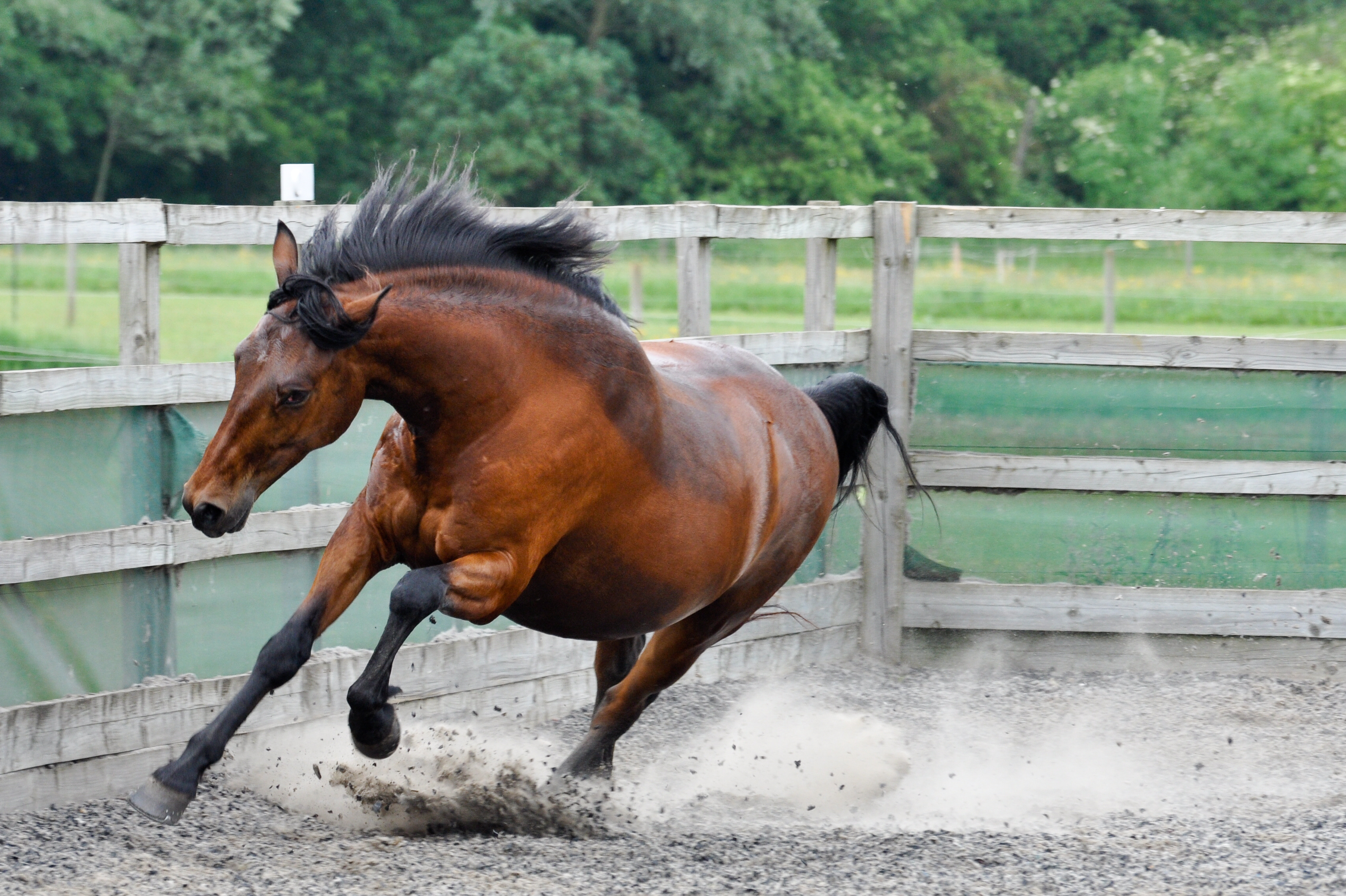Managing a “macho” gelding
- December 22, 2022
- ⎯ Editors of EQUUS
Q: My gelding is the leader of our herd, and he takes his job seriously. He is always on the lookout, he always wants to be with his girls, and he gets anxious when separated. Since he always wants to know where his ladies are, they are a big distraction. I’ve dealt with barn- and buddy-sour horses before, but this guy is so full of energy and spirit I’m just not sure anything is working. I am open to more suggestions or just reassurance it’s a long slow road I’m riding.
A: Your horse is not unusual. Many geldings display this type of behavior. I would not describe it as dominance but rather as male sexual behavior. He may also be dominant—that is, demanding first access to resources such as food, salt licks or the run-in. Most males are dominant to mares. But the real problem is that he has assumed the role of a stallion in his group.

Click here to learn how to read equine body language.
When a horse is castrated, his testicles—the source of the hormone testosterone—are removed. Unfortunately, one of the greatest effects of testosterone occurs long before the colt is castrated, while he is in utero. During pregnancy, the mare’s hormones stimulate the fetus’s gonads so his testes pump out a lot of male hormones called androgens. These androgens act on the brain to masculinize it. The male’s brain is different from that of a female; it has a much larger sexually dimorphic nucleus. As a result, many geldings still behave like stallions even after their supply of testosterone abates.
Thanks to a survey of EQUUS readers we conducted decades ago, we know that geldings may show numerous stallion-like behaviors, such as lip curl (the flehmen response). They may try to breed mares, herd their mares and fight with other geldings. They may behave aggressively toward people and attack foals. Most of these “sexy” gelding are in their teens.
Click here to learn how the seasons affect “marish” behavior.
There also is a slight possibility that your horse was not completely gelded. If a horse is a cryptorchid, meaning one of his testes has failed to drop into the scrotum, the testis retained in the abdomen will continue to secrete testosterone. A common way to identify cryptorchids involves taking two blood samples: The first is used to determine the horse’s resting testosterone concentration; the second is taken after the horse receives an injection of human chorionic gonadotropin, which will stimulate any residual testicular tissue to release testosterone as well as estrogen. If these hormone levels are high in the second sample, then your gelding is actually a cryptorchid stallion, and a surgeon would have to search in the abdomen to remove the retained testicle.
[Disclaimer: EQUUS may earn an affiliate commission when you buy through links on our site. Products links are selected by EQUUS editors.]
[For your bookshelf: Behavioral Issues in Horses: Why Do They Do That?]
You are probably more interested in how to treat this problem than in the reason it is happening. Training can help a horse like this, but as you’ve noted, it can be difficult to overcome his biology. The simplest way to prevent this problem is management: Do not pasture geldings with mares. This may not be possible on smaller farms. If you can’t separate your horses, your veterinarian can prescribe drugs to reduce his anxiety when he is separated from “his” mares. An anti-androgen drug called cyproheptadine might also help.
Katherine A. Houpt, VMD, PhD, DACVBProfessor Emeritus Cornell UniversityIthaca, New York
This article first appeared in the May 2017 issue (#476) of EQUUS magazine
Don’t miss out! With the free weekly EQUUS newsletter, you’ll get the latest horse health information delivered right to your in basket! If you’re not already receiving the EQUUS newsletter, click here to sign up. It’s *free*!





